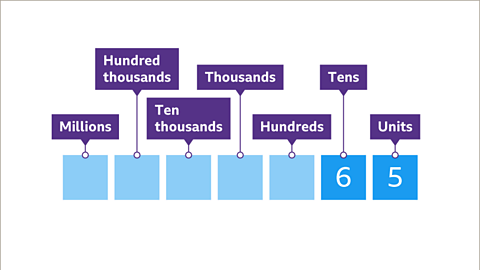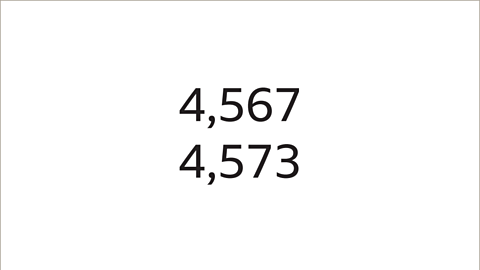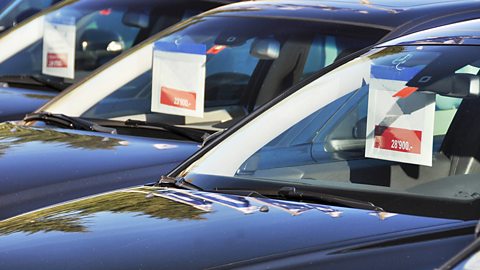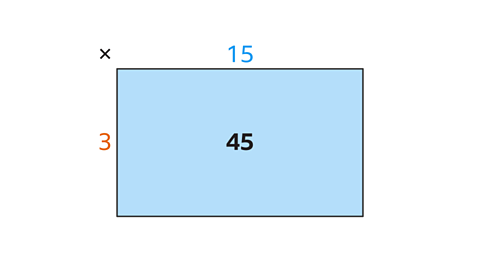Key points
- Numbers can be written as digitOne of the symbols of a number system, most commonly the symbols 0, 1, 2, 3, 4, 5, 6, 7, 8 and 9 or as words, eg 60 or sixty.
- Understanding place valueThe value of a digit that relates to its position or place in a number. Eg, in 1482 the digits represent 1 thousand, 4 hundreds, 8 tens and 2 units. allows you to partitionTo split a number into component parts. Eg, the two-digit number 38 can be partitioned into 30 + 8 or 19 + 19 numbers in different ways. This helps to deal with larger values more efficiently.
- Place value can be used to compare and order integerIntegers are numbers with no fraction or decimal part. They can be positive, negative or zero. 42, 8, and 10000 are examples of integers. values.
Writing numbers using place value
Whole numbers are a set of numbers including all positive integers and 0. Whole numbers do not include fractions, decimals or negative numbers.
- When considering a larger number, using place value labels can often help. place valueThe value of a digit that relates to its position or place in a number. Eg, in 1482 the digits represent 1 thousand, 4 hundreds, 8 tens and 2 units. labels can be written as words or using digits. When using words, units are often referred to as ones. Eg, 34 has 3 tens and 4 units, or we could say 34 has 3 tens and 4 ones.
- When describing numbers, partitionTo split a number into component parts. Eg, the two-digit number 38 can be partitioned into 30 + 8 or 19 + 19 them according to their place value. Partitioning numbers makes them easier to calculate with.
- Some digits are 'joined' in their description. For example, the number 65 is not described as 'six tens and five units'. Instead, it is described by the more common name of 'sixty-five'.
Example: using place value labels

Image caption, Using place value, partition 65 into six tens and five units. This is written as sixty-five.
Image caption, 565 can be partitioned into five lots of 100, six lots of 10 and five units. 565 is written as five hundred and sixty-five.
Image caption, 1,565 can be partitioned into one lot of 1,000, five lots of 100, six lots of 10 and five units. 1,565 is written as one thousand, five hundred and sixty-five.
Image caption, 21,565 can be partitioned into two lots of 10,000, one lot of 1,000, five lots of 100, six lots of 10 and five units. 21,565 is written as twenty-one thousand, five hundred and sixty-five.
Image caption, 321,565 can be partitioned into three lots of 100,000, two lots of 10,000, one lot of 1,000, five lots of 100, six lots of 10 and five units. 321,565 is written as three hundred and twenty-one thousand, five hundred and sixty-five.
Image caption, The number 5,321,565 can be written in words as five million, three hundred and twenty-one thousand, five hundred and sixty-five.
1 of 6
Comparing numbers using place value
- place valueThe value of a digit that relates to its position or place in a number. Eg, in 1482 the digits represent 1 thousand, 4 hundreds, 8 tens and 2 units. can be used to compare two or more numbers.
- Using place value can help to identify the largest number.
- The place value of a digitOne of the symbols of a number system, most commonly the symbols 0, 1, 2, 3, 4, 5, 6, 7, 8 and 9 increases by ten times each step to the left and decreases by ten times each step to the right.
To compare numbers:
Start with the greatestThe largest. In place value, the greatest digit in a number is the furthest to the left of all the digits. place value. Compare the digits in the greatest place value position.
If these digits are the same, continue to the next smaller place until the digits are different.
Example: which number is greater?

Image caption, Which number is greater?
Image caption, Write the first number 4,567 using place value labels.
Image caption, Write the second number 4,573 underneath using the same place value labels.
Image caption, Compare the digits in the thousands place. The digit (4) is the same in each number.
Image caption, Compare the digits in the hundreds place. The digit (5) is the same in each number.
Image caption, Compare the digits in the tens place. The digits are different. 7 tens is greater than 6 tens.
Image caption, The number 4,573 is greater than 4,567
1 of 7
Practise place value
Try this quiz to practise writing and describing whole numbers.
Real-world maths
Place value for whole numbers is used regularly in daily life. Sometimes numbers appear using digits or figures, but they can also appear as words.

- Numbers can appear as instructions in recipes, on a scale when measuring quantities or as a price in shops or online.
- Being able to compare numbers when shopping is important to make sure you are getting a good deal. For example, comparing prices when buying a car could save money.

It is also used by different types of business such as car manufacturers and shops.
- A car manufacturer may want to compare different car models to see which one makes the biggest profit.
- A shop owner may want to order products in terms of how well they sell. This is because how well they sell can affect where they position each item within their shop.
Play the Divided Islands game! gamePlay the Divided Islands game!
Using your maths skills, help to build bridges and bring light back to the islands in this free game from ґуПуґ«ГЅ Bitesize.

More on Place value
Find out more by working through a topic
- count4 of 5

- count5 of 5

- count1 of 5
